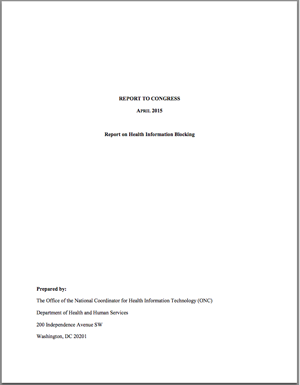Nestled in the gently rolling hills of Verona, Wisconsin, a small Madison suburb, is the 1,000-acre “Intergalactic Headquarters” of Epic Systems, the multibillion-dollar company that claims its software manages medical records for 179 million Americans—or 56 percent of the country. Epic’s HQ features a conference room tucked in a tree house. There’s a Dungeons & Dragons-themed building with a moat and a replica drawbridge. One corridor is modeled to resemble a New York City subway car, complete with a statue of a homeless guy asleep on a bench. A group of Harry Potter-inspired office buildings dubbed the “Wizards Academy” is currently under construction.
Judith Faulkner, Epic’s 72-year-old founder and one of just 18 women on Forbes‘ list of self-made billionaires, often dresses in costume (Lucille Ball, a Hogwarts wizard) at the company’s annual meeting, which draws thousands of hospital executives and IT officers to the company’s 11,400-seat Deep Space Auditorium. Her motto: “Do good. Have fun. Make money.”

She’s solid on the second two points. Thanks to the White House’s stimulus-era initiative to bring the health care industry into the digital age, her company has grown into the country’s leading vendor of software in the $9.3 billion electronic health records (EHR) sector. Epic pulled in $1.8 billion in 2014 and is expanding at a rate of about 1,000 new employees a year. Kaiser Permanente, CVS’s Minute Clinics, Johns Hopkins, and Mount Sinai all use Epic.
But instead of ushering in a new age of secure and easily accessible medical files, Epic has helped create a fragmented system that leaves doctors unable to trade information across practices or hospitals. That hurts patients who can’t be assured that their records—drug allergies, test results, X-rays—will be available to the doctors who need to see them. This is especially important for patients with lengthy and complicated health histories. But it also means we’re all missing out on the kind of system-wide savings that President Barack Obama predicted nearly seven years ago, when the federal government poured billions of dollars into digitizing the country’s medical records.
“Within five years, all of America’s medical records are computerized,” he announced in January 2009, when visiting Virginia’s George Mason University to unveil his stimulus plan. “This will cut waste, eliminate red tape, and reduce the need to repeat expensive medical tests.”
Unfortunately, in some ways, our medical records aren’t in any better shape today than they were before.
This is a personal issue for me—I’m one of those Americans with a dizzyingly complex medical history. In April 1997, two months shy of my 11th birthday, I was diagnosed with acute lymphoblastic leukemia. Over three years of chemotherapy—and the seizures, spinal compression fractures, sepsis infections, and debilitating nerve pain that came with it—I amassed a thick file of prescriptions filled, body parts scanned, and blood sampled.

Before each visit to a new specialist, my mom and I trekked down to the basement records department of Children’s Hospital Minneapolis and waited for someone to photocopy reams of paper and films. Then we schlepped to the appointment with folders of X-rays, blood tests, and scribbled doctors’ notes of varying intelligibility. More often than not, they’d order yet another round of tests—an extra round of being poked and jabbed for me personally, and a small part of the testing redundancies that add an estimated $25 billion to the nation’s health care costs.
The expensive (and potentially life-threatening) problems associated with the country’s antiquated, hodgepodge health records system were exactly what the Obama administration set out to solve in early 2009. At the time, only 17 percent of doctors stored information digitally, and studies suggested that while Obama’s proposal could cost up to $100 billion to implement, it could ultimately save $80 billion in health costs each year. When Congress passed the $840 billion stimulus package, it allotted $30 billion for hospitals and medical providers to digitize their records via the Health Information Technology for Economic and Clinical Health (HITECH) Act. So far, the government has forked over $28 billion to doctors and hospitals to install EHR systems.
Despite the acronym, the HITECH Act wasn’t particularly tech-forward. When it took effect, storing files in the cloud seemed like uncharted territory for most physicians, who worried about privacy breaches. Hospitals and doctors defaulted to hosting their own files on local servers.
Epic was shovel ready for this stimulus windfall. Faulkner’s company was one of the few software vendors back then offering an all-in-one package covering a hospital’s recordkeeping needs. There’s Cadence, a scheduling application. Haiku syncs with mobile devices. ASAP plans ER visits. Stork takes care of deliveries and prenatal care. MyChart is a web interface for patients to view their own records. All together, it’s like the Microsoft Office of health care software—more comprehensive than any of its competitors, even if its individual components are kind of meh.
“What you hear is that, if you were to buy the best of breed—the best cardiology system, or the best chemotherapy system—no one would ever choose Epic,” says Julia Adler-Milstein, a University of Michigan researcher who studies health care IT. As it stands, she says, using Epic is easier than trying to piece together better options from various software vendors. On top of that, Epic will tailor each installation on-site to a customer’s specific needs. What it doesn’t have—and ditto systems created by competitors Cerner and Meditech, the other bigwigs in EHR—is a framework to connect to other facilities using competing EHR systems.
In terms of bringing digital records to practices across the country, the HITECH Act has unquestionably succeeded: The percentage of US hospitals using digital records skyrocketed from 9.4 to 75.5 percent between 2008 and 2014. But the HITECH Act didn’t prioritize “interoperability”—the ability to transfer a medical file from one hospital to another. Unless programmers ensure that their system properly integrates with another, a doctor’s computer might spit out something akin to emoticons when queried for key test results.

A 2014 RAND report singled out Epic as a roadblock to interoperability. With the company’s rise, researchers wrote, came an increasingly walled-off system. “By subsidizing ‘where the industry is’ rather than where it needed to go,” the report said, the government propped up an EHR market “that did not have the level of connectivity envisioned by the authors of the HITECH Act.”
The year before, Epic’s rivals had banded together to create the CommonWell Health Alliance Partnership, a nonprofit trade association devoted to setting standards for the exchange of information. Today, the group boasts 28 members and some of the biggest players in the market—except Epic, which has instead prioritized making it easier for hospitals using its software to share information with each other. (The company says it facilitates the exchange of almost 20 million patient records each month.) Epic does work with hospitals and practices to link its system with competing ones, but it usually charges top dollar to do so.
Meanwhile, Faulkner—Epic’s CEO and a major Democratic donor—landed a spot in 2009 on the Obama administration’s Health IT Policy Committee, which helped shape the regulations guiding health care software and pushed to rapidly implement EHR in hospitals without first figuring out how to trade records between different systems. And since last year, Epic has paid lobbyist Bradford Card, the brother of George W. Bush’s former chief of staff, more than $130,000 to convince members of Congress that the company plays well with others. Card has said Epic has been the “subject of misinformation” suggesting “they’re not interoperable, when in fact they are.”
Epic is not the only barrier to a seamless medical records system. Thanks to legislative maneuvering by former Rep. Ron Paul (R-Texas) in 1999, the federal government can’t fund any sort of system with unique health care identification numbers. (Paul saw individual medical IDs as further creep of Big Brother.) Social Security numbers aren’t a good fill-in; they’re not on insurance cards, and in April Obama signed a bill that will strike them from Medicare cards in order to reduce identity theft.
The upshot is that according to a government report released in August, only 56 percent of hospitals had received electronic records from other practices in the past year—and just 40 percent of those had successfully merged the information into their own databases. A recent study by the American Medical Association and the online network AmericanEHR Partners found that 43 percent of physicians thought their software actually made their jobs more difficult. Doctors are investing the time to input data, but their offices are still having to fax and mail records like they did a decade ago. Less than 10 percent of hospitals say they’ve been able to trade records entirely through their digital systems.
Last spring, five Republican senators wrote a letter to federal regulators asking, “What have the American people gotten for their $35 billion investment?” Digitization of records was supposed to “save the Medicaid and Medicare programs $12.5 billion through 2019,” they wrote, but those savings have yet to materialize, and “the cost of sharing data among different vendors” has prevented doctors at competing practices from swapping patient information.

Two weeks later, Peter DeVault, Epic’s director of interoperability, appeared before the Senate to explain how hospitals and doctors with competing software could view information stored by Epic. First, DeVault said, Epic would have to link each system that a hospital wanted to access—a labor-intensive process for which it charged an hourly fee. Once linked, hospitals could trade information, but only by paying an additional fee: “We charge on a per-patient, per-year basis—so it’s not per transaction—and it’s the same whether that patient is sent to 100 different places or one other place. And that charge is $2.35,” DeVault said. Rather than building a nationwide system to make its software connect to different vendors, Epic, like its competitors, charged hospitals for every patient who wanted to access information outside of its software. (Shortly after the hearing, the company, along with other major EHR firms, announced it would suspend the fees.)
A few weeks later, Dr. Karen DeSalvo, head of the Office of the National Coordinator for Health Information Technology, submitted a 39-page report to the Senate detailing concerns that, along with charging the fees, EHR companies were engaging in “information blocking” “to control referrals and enhance their market dominance.” DeSalvo admitted that her office had been unable to determine the extent of information blocking or company specifics because hospitals and doctors had been made to sign contracts with gag orders prohibiting the discussion of contract terms, “as well as any opinions or conclusions about the performance or any other aspects of the developer’s health IT.” The ONC may not like the gag orders, but it has no power to police them. In September, it launched a website where hospitals and doctors can lodge complaints against specific EHR firms.
There have been other signs that the government has had enough with Epic. A massive contract to overhaul and modernize the Department of Defense’s health records, worth up to $9 billion over the next 18 years, had long been expected to go to the company. But in July, the Pentagon announced it had instead chosen Cerner to provide the software to serve 9.5 million DOD beneficiaries. Jonathan Woodson, the assistant secretary of defense for health affairs, stressed that the Pentagon believed it was “very important to have a highly integrated system that is portable. The private sector has to position itself to be more interoperable.”
The criticism has Epic retrenching. A spokesman told Mother Jones that the company has long supported “sharing patient records wherever the patient goes.” At the same time, Epic declined interview requests. “We’ve become a little uncharacteristically media exposed in recent months,” the spokesman said, “and I sense that the pendulum is headed back to a quieter spell.”
But Epic is probably here to stay, especially given the incredible investments hospitals have made to implement its system—Duke University, for example, reportedly spent $700 million on its Epic installation. That doesn’t mean Americans have to accept the status quo. According to Adler-Milstein, the University of Michigan researcher, “What we can do is force them to open up their system a little more, so that it plays better with others.” She hopes increased scrutiny pushes the company to publish its API—the code that lets others access information in its system—to allow other firms to build more user-friendly software.
The sooner the better for people like me. When I moved to Washington, DC, five years ago, I entered a cancer survivorship clinic at George Washington University. In addition to running annual tests to make sure chemo hasn’t left lingering damage to my heart or liver, the clinic is designed to offer survivors a single repository for our vast health records.
But thanks to the ecosystem set up by Epic and others, I don’t have peace of mind that my medical history would be available in a pinch. I live closer to two other hospitals. Should an emergency happen, an ambulance would probably take me to one of them. Neither uses the same EHR firm as George Washington, which means my records could remain frustratingly out of reach, just when I need them most.
Following the publication of this story, Epic’s vice president of interoperability, Peter DeVault, wrote in to respond. Here’s his full response.













